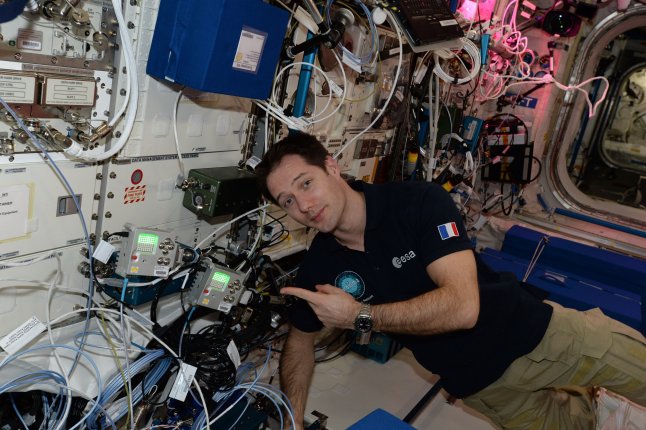
22nd February 2021
Online tips to blast into orbit with Astro Pi Mission Zero!
Astro Pi Mission Zero gives young people the opportunity to blast their program into space and send a message to the astronauts on board the International Space Station.
With many of you supporting young people to learn to code from home, Ruth from The Mount School Code Club in York shares some tried-and-tested tips for taking Astro Pi Mission Zero online.

What is Astro Pi Mission Zero?
Astro Pi Mission Zero is an engaging challenge to write a simple Python program that will run on the International Space Station. The code will run for up to 30 seconds on one of the two Astro Pi computers that are on the space station.
Step-by-step instructions are available to help young people take part in this year’s challenge, which involves measuring the humidity in the Columbus module and displaying a colourful message on the Astro Pi’s LED matrix for the astronauts to read!
It can be completed in person or as part of an online session. Entries can be submitted either individually, or as part of a team of 2–4 young people.
The closing date for entries is Friday 18 March and Astro Pi is open to ESA Member States, as well as Slovenia, Canada, Latvia, and Malta.
Ruth’s top tips on delivering Astro Pi Mission Zero online
Code Club educator Ruth has helped her club go into orbit with Mission Zero. Read her four top tips to make sure you have a smooth mission from online classroom to space!
1. Show them where their code is going to run
Engage the kids in the project before they start writing any code. I showed them a Raspberry Pi with a Sense HAT and we watched the video at the start of the project so they could see the Astro Pi computers onboard the space station. Take a look at Google Street View of the ISS, and see if you can find them on board!
It helped them realise that the code they were about to write was actually going to be run in space!
2. Teach them the underscore (_) key!
Kids are now used to typing on a computer, however, there are some keys that we use in code that they may not be so used to. For example in the Astro Pi project, the underscore key (_) is used often.

3. Fixing bugs together
To help fix a bug, I’ll ask them to share their screen and make their code font larger on Trinket. Everyone benefits from this, as all the kids can see the problem and learn from it. Coders often help each other rather than me helping them, which is great and I always encourage this.
4. Take your time
Astro Pi Mission Zero can be completed in one session, but we took our time and completed the project in three sessions. We used the first session for setting up, explaining the project and working on the scrolling message to appear. The second session was about investigating how to get the picture to appear, and the third session was using the sensor to read the value and to respond differently depending on the value it’s received.
Ruth’s last piece of advice:
“[At] each small step in this project I’ve seen the kids’ faces light up when they see their code working how they wanted it to and now that they know their code is actually going to be used somewhere it makes them feel even prouder. I’ve had comments from parents saying it’s the most engaged they’ve seen their child in a long time.”
My Code Club is paused
If your club is paused, we have a step-by-step video to guide coders through Mission Zero. You can share the video link and they can blast their code into orbit from the comfort of their own home!
Connect with the Code Club team on Twitter at Code Club UK or Code Club World and let us know how your coders get on with Astro Pi Mission Zero!
